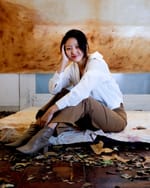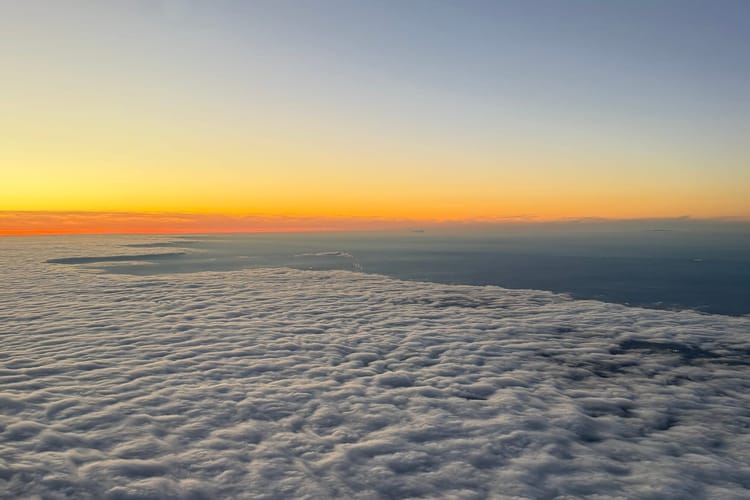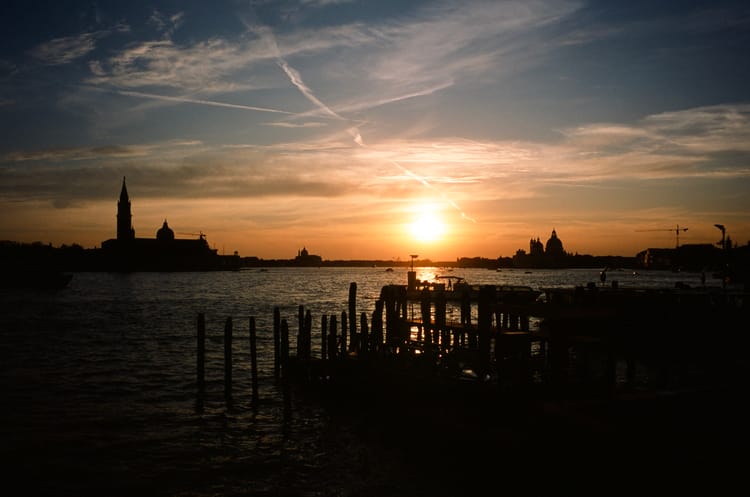Images That Refuse to Hurry
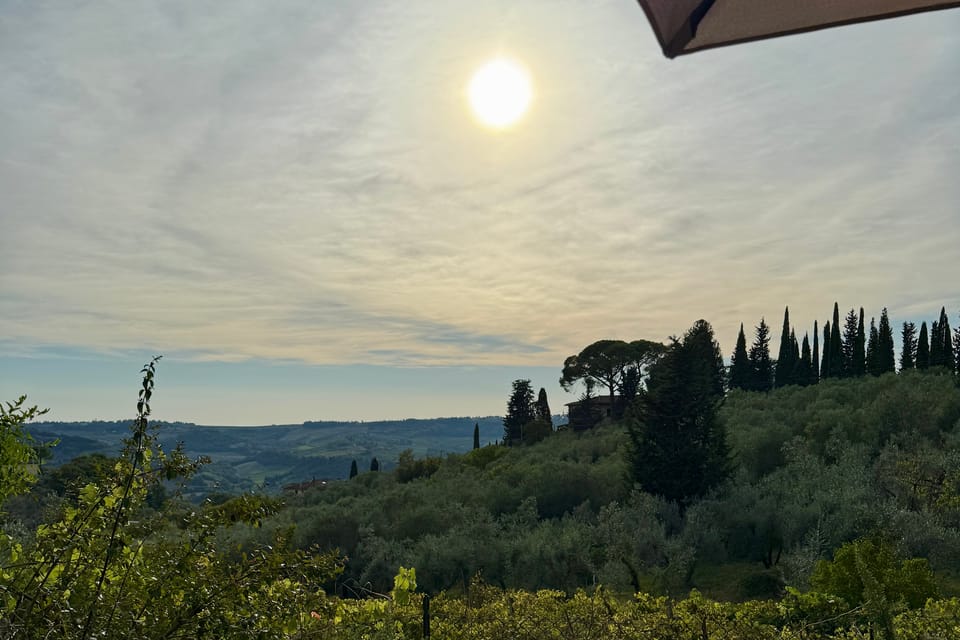
You don’t need to know photography to follow this story. All you need is curiosity — and a willingness to see things a little slower.
This is about a week in a Tuscan village, where I didn’t just learn alternative image-making techniques.
I learned how to be with process. With unpredictability. With materials that don’t follow rules.
And I saw how much that mirrors the way I live, create, and coach.
Not Making Images, Letting Them Emerge
We worked with experimental photographic methods: chlorophyll prints, cyanotypes, anthotypes, Polaroid lifts, lumen prints, and herbal toning baths.
But nothing happened instantly.
Some images ghosted away in the sun.
Others reappeared hours later.
It wasn’t about crafting the perfect print.
It was about paying attention to what unfolded.
The Print Was Already Inside the Leaf
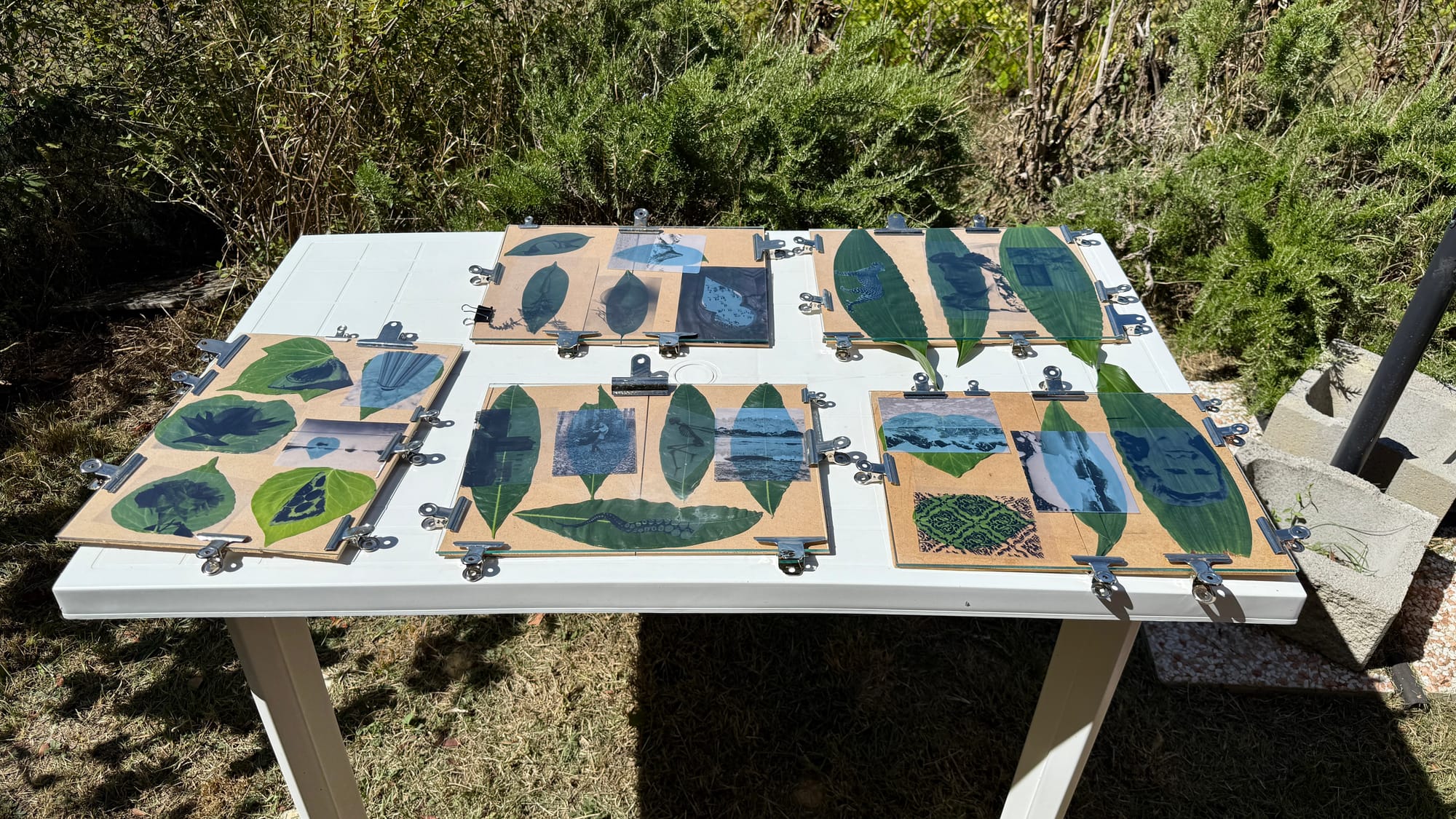
With chlorophyll printing, there are no chemicals, no dyes — only leaves and sunlight.
You find the right leaf — seasoned, soft enough to hold light.
You press a negative onto it.
Expose it for days.
Slowly, the sun reveals the image from within the leaf itself.
No pigment added.
No ink applied.
Just time, and readiness.
It felt less like making something — and more like discovering what was already there.
Sometimes the story isn’t something you write.
It’s something you wait to see — already held inside you, waiting for the right exposure.
Light That Stains and Light That Burns
Cyanotypes were the most familiar —
Deep Prussian blue. UV-activated. Precise.
They felt like blueprints of intention.
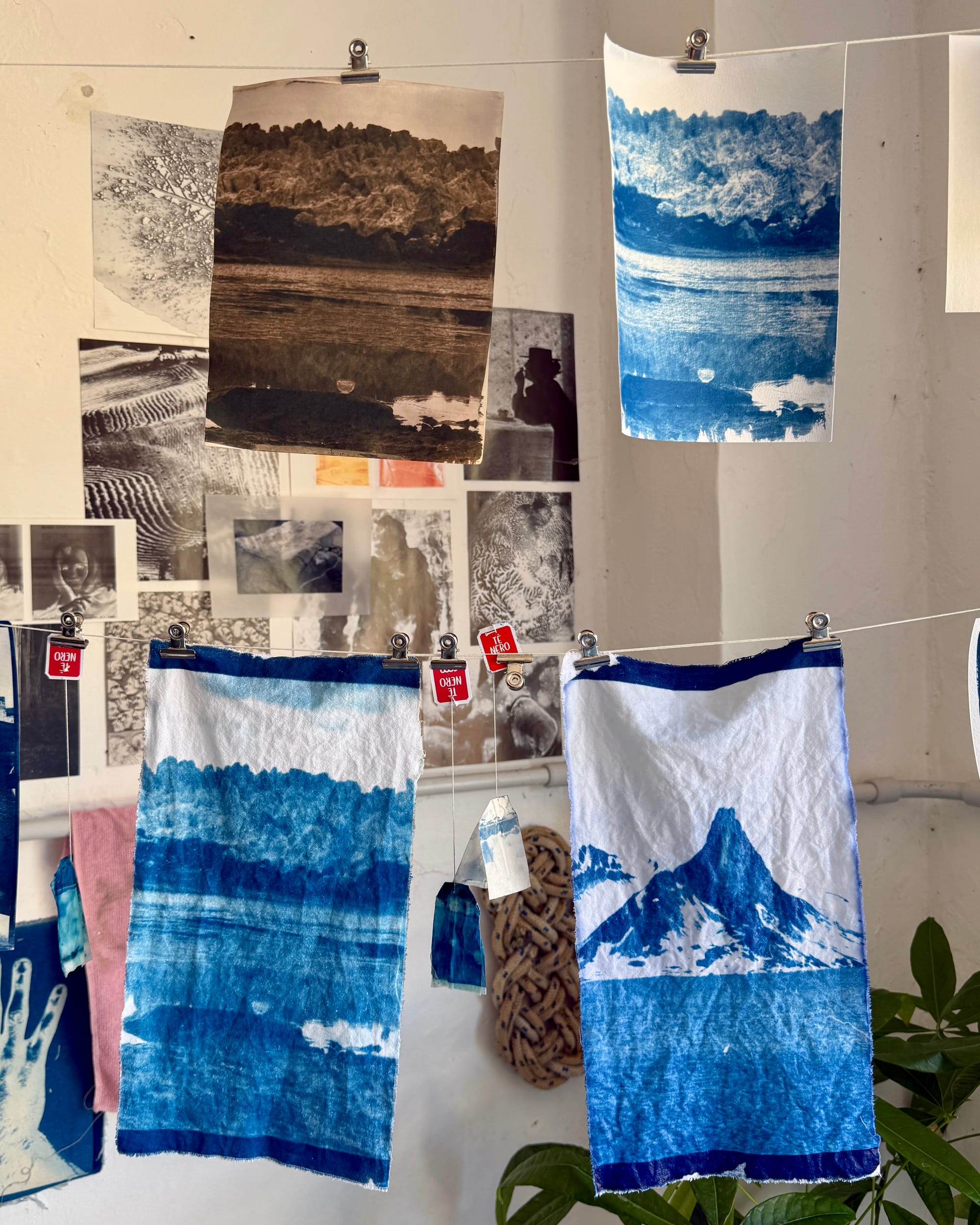

Cyanotypes on different surfaces, Tuscany, Italy, Sep 6, 12:36pm
We printed them not just on paper, but on canvas, glass, agar-based bioplastic sheets — even tea bags.
The chemistry stayed the same, but the outcomes never did.
Some surfaces absorbed. Others resisted. Some peeled. Some held tight.
It reminded me how much context changes everything —
Not just how art takes shape, but how we do too.
Anthotypes were their opposite —
Made from turmeric, beetroot, and spirulina.
Faint, slow to reveal. Vulnerable to fading.
A whisper of an image, stained by plants and time.
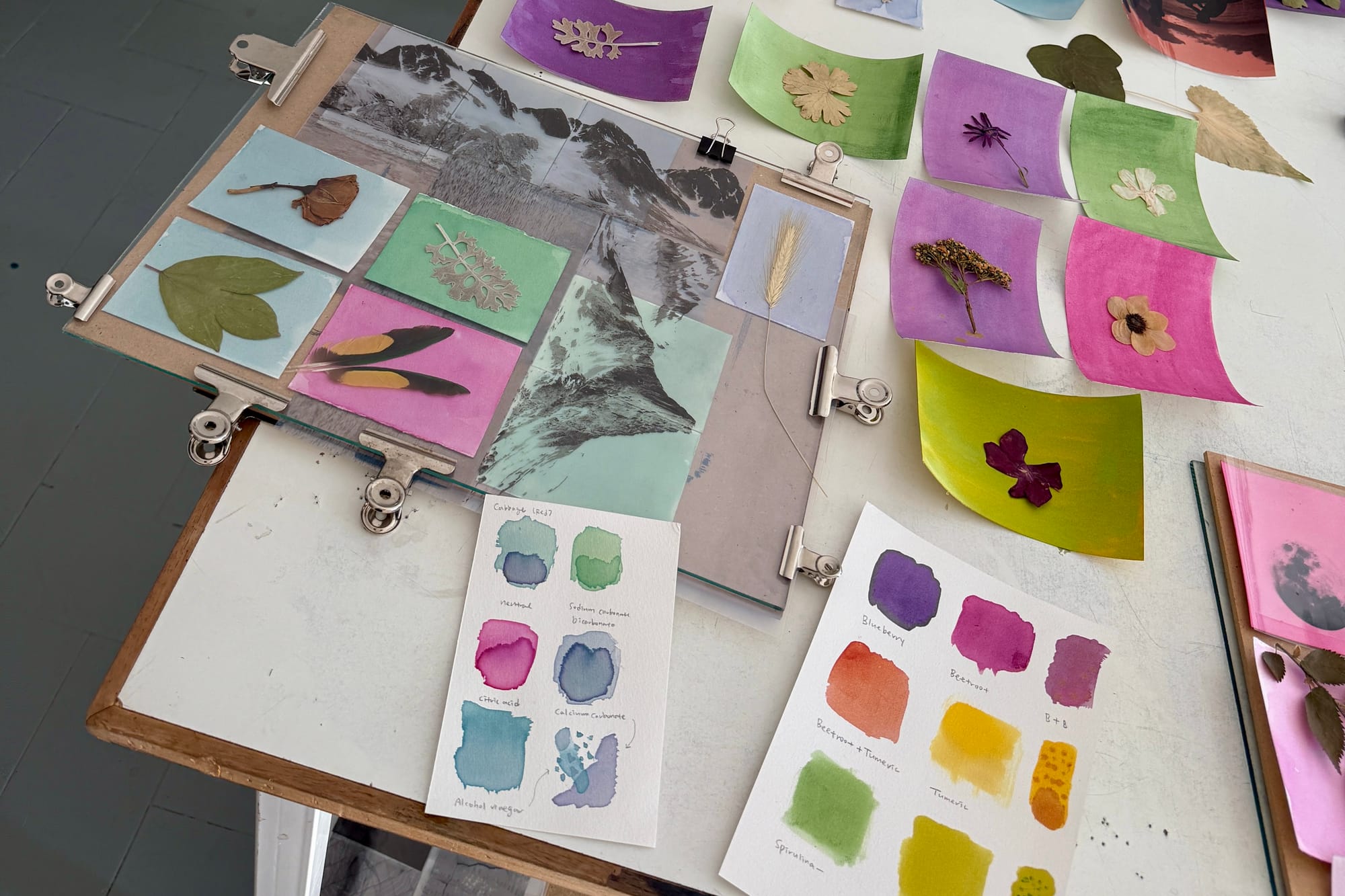
One held on tight.
The other let go.
Some parts of life imprint boldly.
Others mark you in softer, almost invisible ways.
Both are real. Both count.
The Village Was the Frame
We worked in a garage-turned-darkroom, where prints dried slowly on indoor clotheslines stretched across the space.
We shared our meals and printmaking beneath a strawberry tree, its branches scattering light across both paper and plate.
And outside the studio?
There was one coffee shop I visited daily.
One restaurant for dinner.
One massage therapist.
One local yogi.
I got to know them all — well enough to have them in my phone, and to text one for help calling a taxi to the airport.
And at the heart of it all:
Chiara and Walter, the artist-hosts who held the space with such care —
and the beautiful peers who showed up not just to learn, but to witness, experiment, and connect.

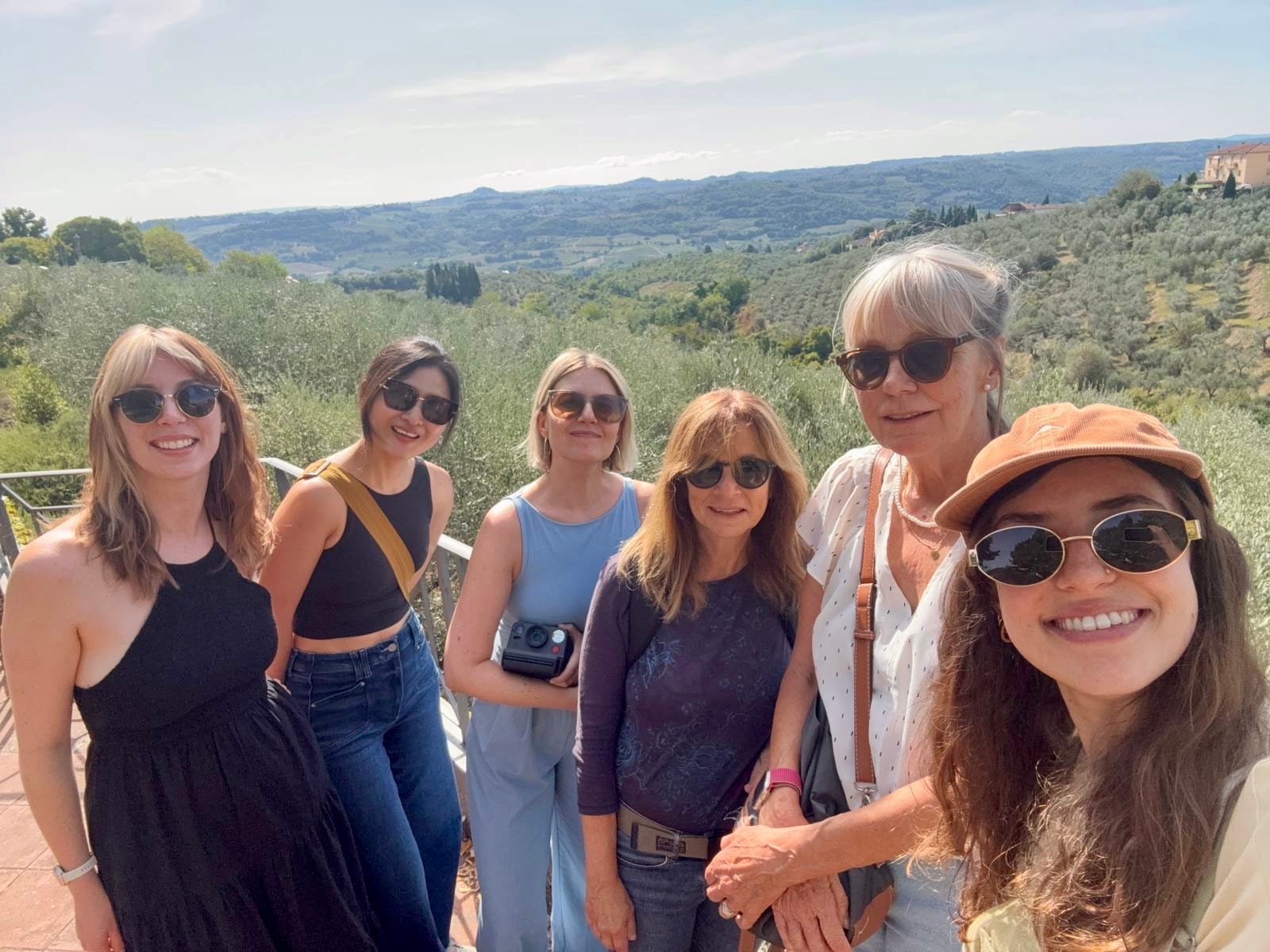
The last day group photos, Tuscany, Italy, Sep 7, 3:36pm
It felt like the entire village was part of the creative process — even if they weren’t making art with us, they were in the art, somehow.
“Lifelike art is not a thing… it is inseparable from real life.”
That’s exactly how it felt.
The art and the day were inseparable.
Soft Shift in The Toning Bath
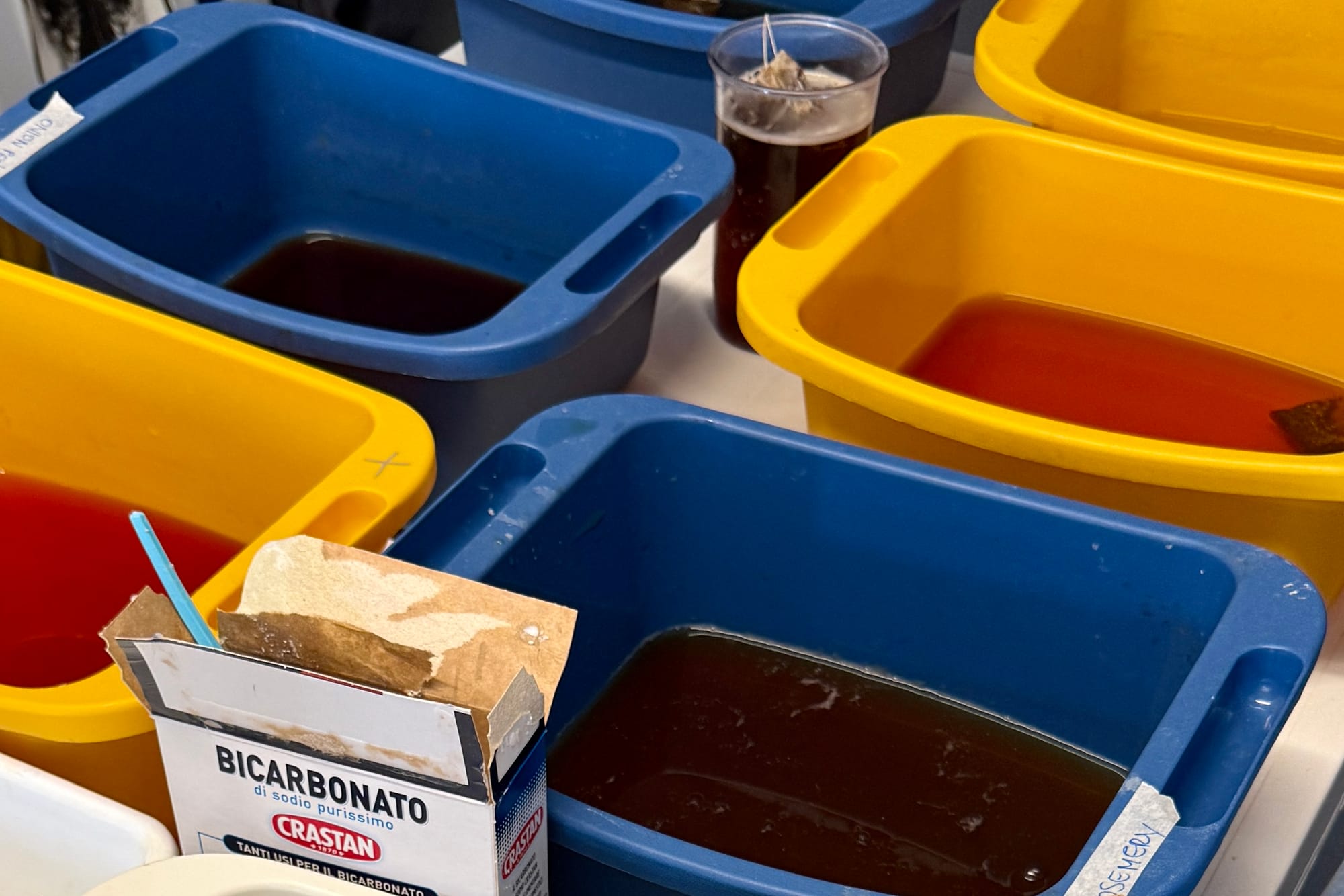
At the back of the room, there were trays steeping with black tea, onion skins, rosemary, avocado, rooibos tea, and baking soda.
We dipped our finished prints into these natural toning baths.
Not to erase them — just to see what might change.
Some images turned warmer.
Some deepened. Some softened.
Some faded first, only to darken again later.
It reminded me:
Change doesn’t always look like improvement.
Sometimes it’s subtle.
Sometimes it’s slow.
But it still leaves a mark.
That’s how personal growth works, too.
Merging Methods: Cyano-Lumen and Creative Integration
One of the most surprising experiments was cyano-lumen — a fusion of two techniques — cyanotype and lumen printing — not usually combined.
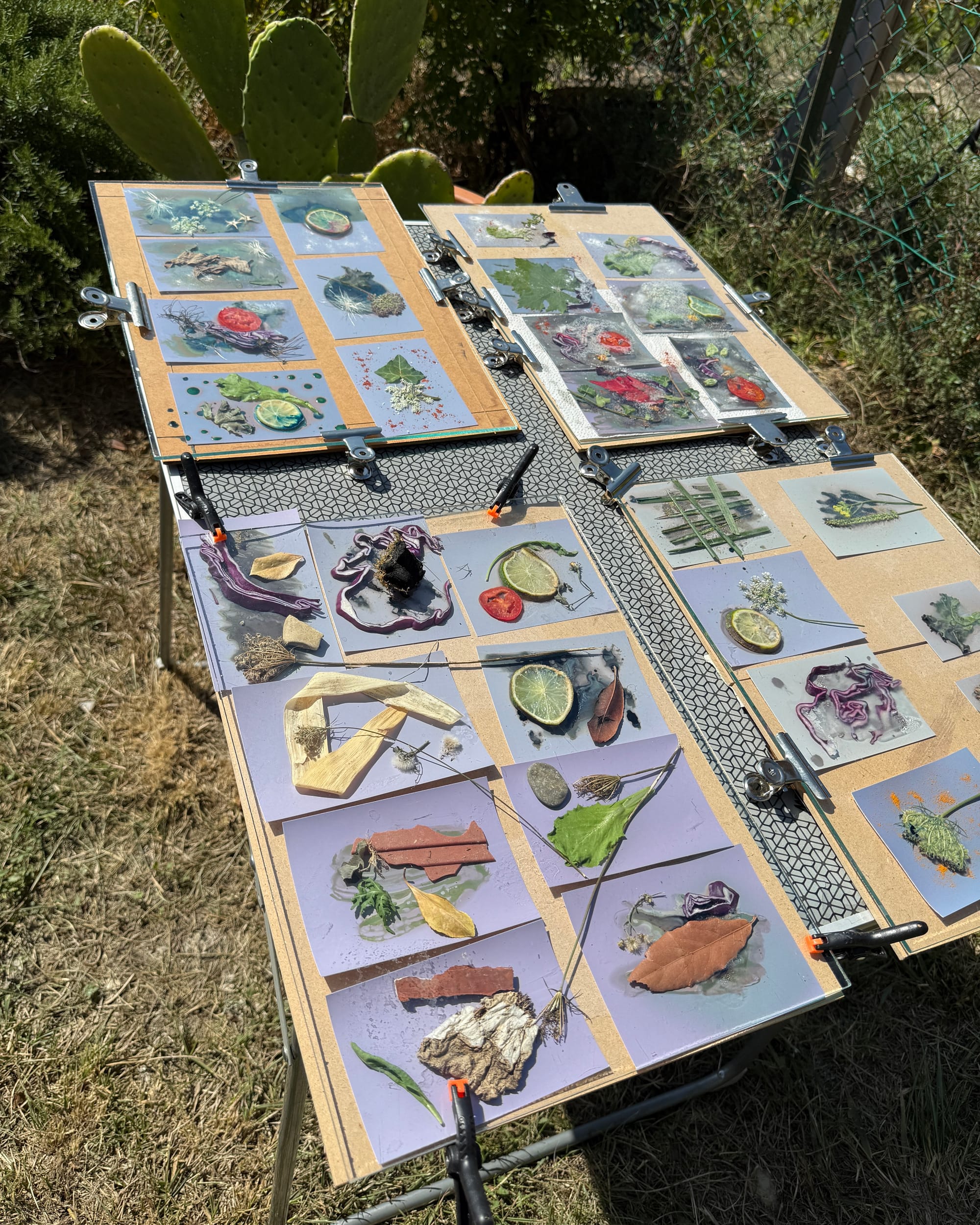
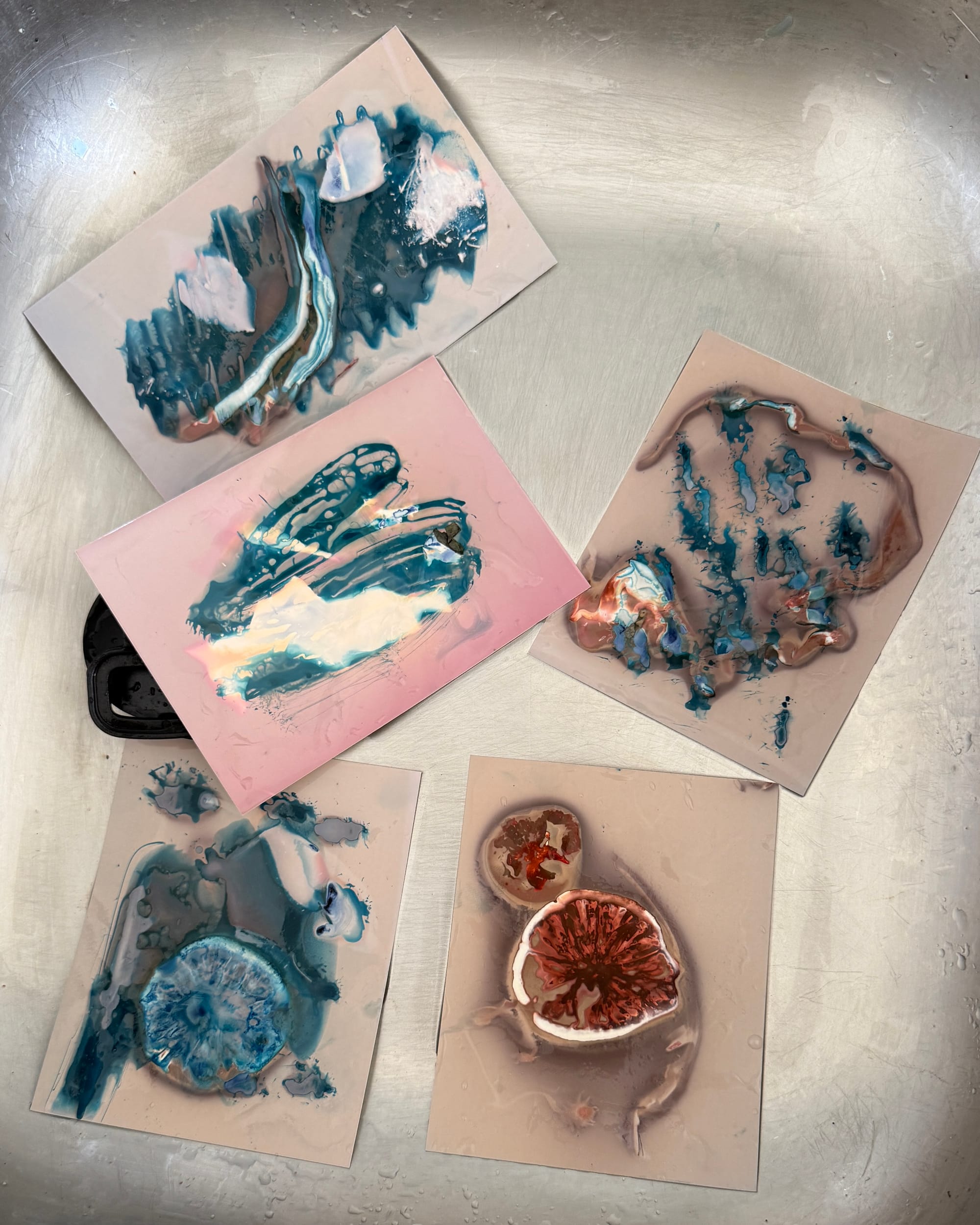
Making cyano-lumen prints, Tuscany, Italy, Sep 6, 04:58pm
We layered them together using not just found objects from the garden — but salad ingredients: purple cabbage, tomatoes, wild rocket leaves.
Images bled together.
Blues merged with rust.
Forms blurred, broke apart, and reformed — like memory or identity or compost.
It reminded me of the parts of myself I’ve spent years trying to integrate:
- Artist / Coach / Startup Lead
- Mother / Solopreneur
- Strategic / Sensory
There’s no clean edge. No final form.
Only co-existence.
Only process.
Only becoming.
What Water Taught Me
One afternoon in the darkroom, we made watergrams — placing photo paper under a sheet of glass at the bottom of a water-filled tray, sometimes with a negative resting over it. Then, we shook the tray gently, letting ripples move across the surface.
When we were ready, we exposed it to a single burst of flash light.
Movement, water, and timing.
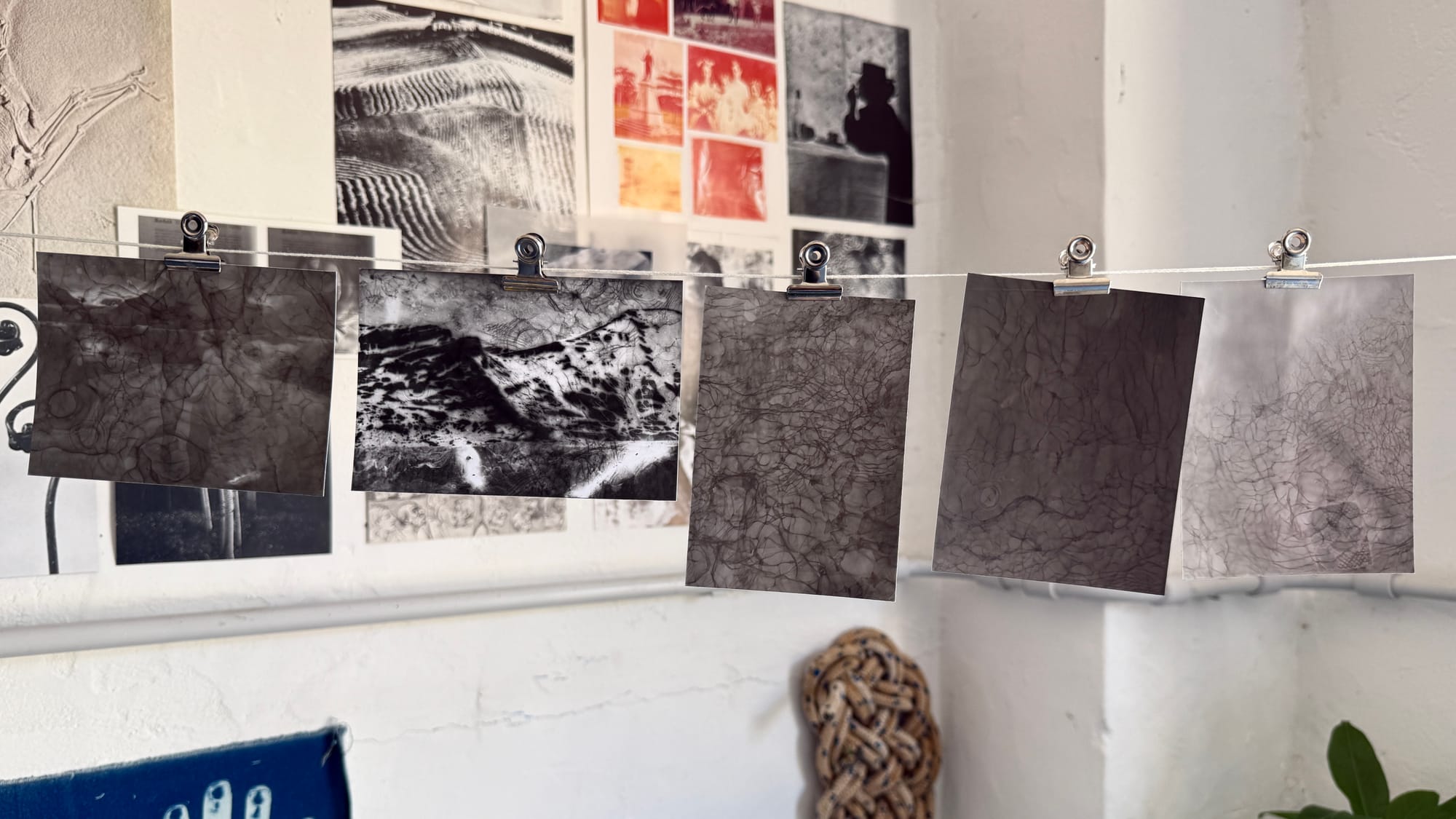
Some images captured the wave lines perfectly.
Others slipped into softness. Some overexposed. Some barely appeared.
Then we developed and fixed them — holding onto whatever the water had chosen to reveal.
It reminded me:
Not all creation is still.
Sometimes it’s instability that brings something into focus.
You don’t always need control.
Sometimes, you just need to shake the tray — and let the light in.
Shells That Hold Memory
On the last day, I made Polaroid lifts — soft, floating emulsion images — and placed them on seashells and oyster shells.
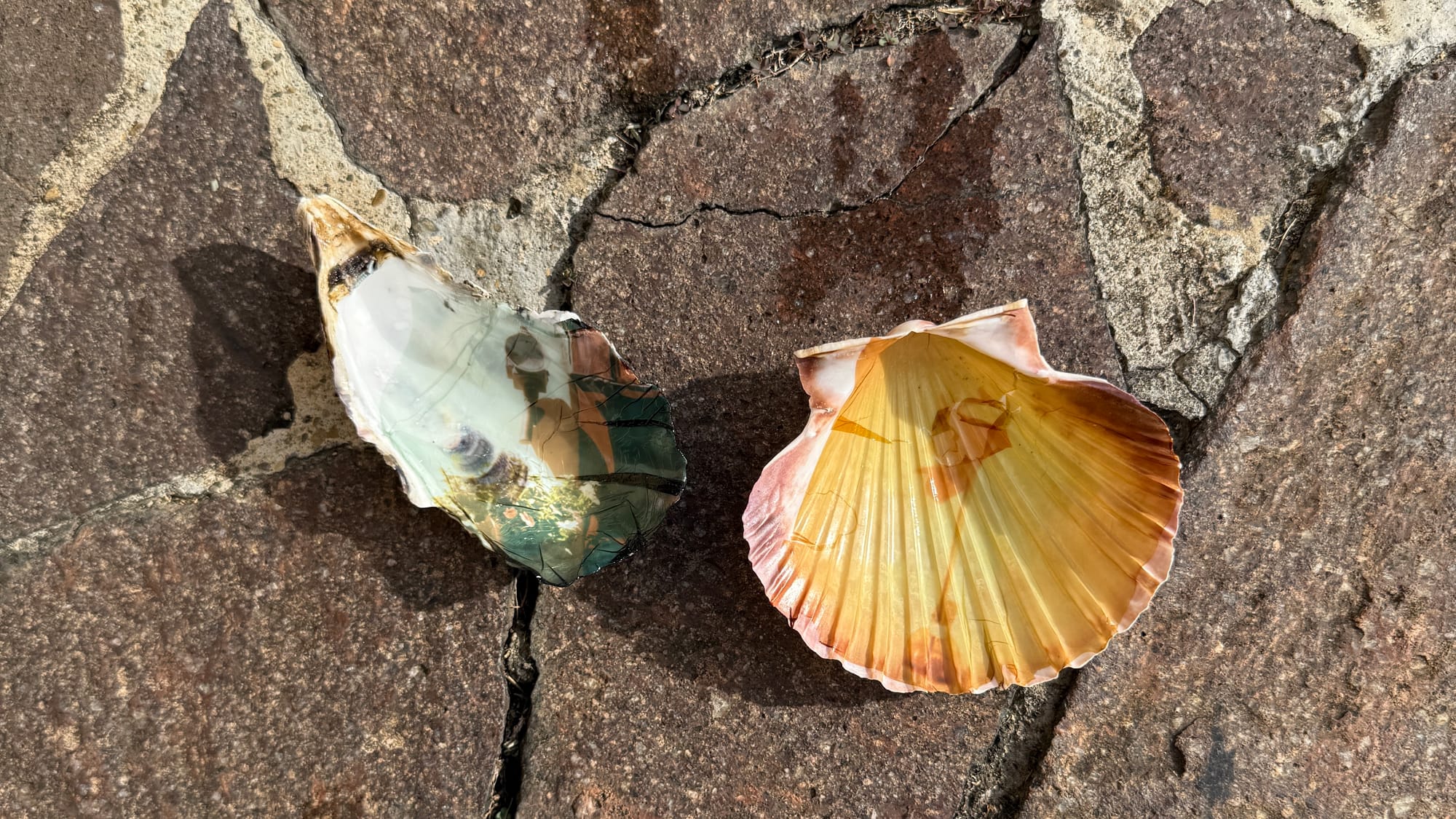
It took patience.
No rush. Waiting for the emulsion to loosen, soften, drift free.
The photos warped to fit the curves.
Edges peeled, folded, fused.
Memories softened by salt, made more beautiful by imperfection.
They weren’t framed.
They were held — like keepsakes, or skin, or time.
Coaching as Creative Process
This is how I coach now.
Not to “fix” someone.
But to hold space like a darkroom, or a toning bath —
where things can emerge slowly, through chemistry, timing, and care.
Many of the processes we used — especially chlorophyll prints and anthotypes — fade over time.
They’re not built to last forever.
They’re meant to be experienced while they’re alive.
And maybe that’s the point.
Coaching is like that, too.
A moment of attention. A conversation. A felt shift.
Something you carry with you — even if the image changes.
If you’re in a moment of shift —
Where the old frame doesn’t fit, but the new one hasn’t formed —
You don’t need to rush toward clarity.
You don’t need to perfect the image.
Let things steep.
Let the sun do its quiet work.
Let the materials of your life speak.
And if you want a guide to sit beside you —
I’d be honored to hold that creative space with you.
— Jay
📚 Glossary: Alternative Photography Processes
A few terms for the curious…
Chlorophyll Print
Printing with the natural light-sensitive material inside leaves. Sunlight etches shapes directly onto the plant.
Cyanotype
A photographic process using UV light and iron salts to produce deep blue prints. One of the oldest camera-less techniques.
Anthotype
Images created using plant-based pigments (like turmeric, spinach, beetroot) and sunlight. Impermanent and organic.
Lumen Print
A camera-less photographic process using expired photo paper, sunlight, and time.
Organic materials are placed directly onto the paper and exposed to the sun, creating soft, surreal silhouettes — like sunlight sketches.
Cyano-Lumen
A hybrid of cyanotype and lumen printing. Combines control with unpredictability — structure with organic decay — in one image.
Watergram
A photographic image made by placing photo paper in a tray of water — sometimes beneath a glass sheet or with a negative — then exposing it to a burst of flash light.
The resulting image reflects the motion of water, the timing of the exposure, and the unpredictability of light distortion. A study in movement and surrender.
Toning Bath (Natural)
A finishing step using herbal or plant-based infusions (like black tea or avocado) to shift a print’s color and mood — gently, over time.
Polaroid Lift
A method of separating the emulsion layer from a Polaroid photo and transferring it onto surfaces like paper, glass, or even seashells — yielding delicate, floating images.
P.S. Curious about these processes?
You can see behind-the-scenes videos and images on my art Instagram or join a future workshop with me. Let’s stay in touch.
